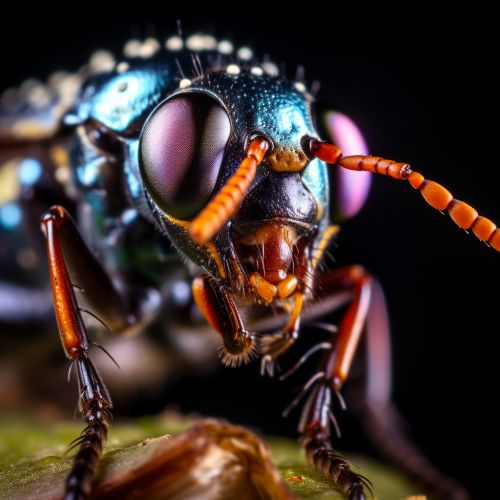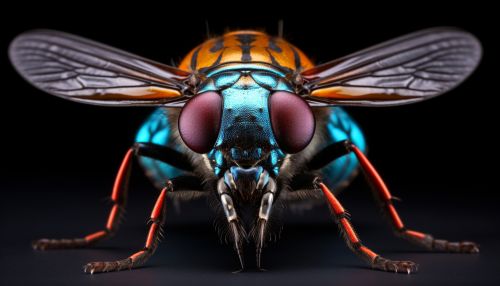Coleoptera
Introduction
Beetles, belonging to the order Coleoptera, are a group of insects that have a significant impact on our ecosystem. They are characterized by their hard exoskeleton and forewings, known as elytra, which protect the delicate hindwings folded beneath. With over 400,000 described species, Coleoptera is the largest order in the animal kingdom, accounting for nearly 25% of all known life-forms.


Morphology
Beetles exhibit a wide range of morphological characteristics due to their immense diversity. However, all species share certain common features. The body of a beetle is divided into three main sections: the head, the thorax, and the abdomen. Each of these sections plays a distinct role in the beetle's survival and reproduction.
Head
The head of a beetle houses the insect's brain, compound eyes, antennae, and mouthparts. The antennae are sensory organs, used for detecting chemical signals and vibrations in the environment. The mouthparts, which can be highly specialized depending on the species, are used for feeding and can include mandibles, maxillae, and a labium.
Thorax
The thorax of a beetle is composed of three segments, each with a pair of legs. The first segment, the prothorax, is separated from the head by a narrow constriction, or neck. The prothorax also supports the first pair of wings, which are hardened into elytra in beetles. The elytra serve to protect the second pair of wings and the abdomen.
Abdomen
The abdomen of a beetle contains most of the insect's vital organs, including the heart, digestive system, and reproductive organs. It is protected by the elytra when the beetle is at rest. The abdomen is also the site of the beetle's spiracles, openings that allow for the exchange of oxygen and carbon dioxide.
Classification
Beetles are classified into four suborders: Archostemata, Myxophaga, Adephaga, and Polyphaga. Polyphaga is the largest and most diverse suborder, containing more than 300,000 species. Each suborder is further divided into families, which are then subdivided into genera and species.
Ecology
Beetles play a crucial role in the ecosystem. They are involved in processes such as pollination, decomposition, and predation. Some species of beetles are also known to be pests, causing damage to crops and stored products.
Pollination
Many beetles, particularly those in the family Scarabaeidae, are important pollinators. They visit flowers to feed on pollen and nectar, and in the process, transfer pollen from the male parts of the flower to the female parts, facilitating fertilization.
Decomposition
Beetles, especially those in the family Silphidae, also known as carrion beetles, play a vital role in decomposition. They feed on dead animals and help in breaking down and recycling organic material.
Predation
Certain beetles, such as lady beetles and ground beetles, are predators that help control pest populations. They feed on other insects and small invertebrates, reducing their numbers and preventing them from becoming pests.
Human Interaction
Beetles have both positive and negative impacts on human activities. While some species are beneficial, others are considered pests.
Beneficial Beetles
Some beetles are beneficial to humans. Lady beetles, for example, are used in biological control programs to manage pests. Dung beetles help in nutrient cycling and soil aeration by burying and consuming dung.
Pest Beetles
On the other hand, some beetles are pests that cause significant damage to crops and stored products. Examples include the Colorado potato beetle, which devastates potato crops, and the boll weevil, which attacks cotton plants.
Conservation
Many beetle species are threatened by habitat loss, pollution, and climate change. Conservation efforts are underway to protect these species and their habitats. These efforts include habitat restoration, captive breeding programs, and legal protection.
